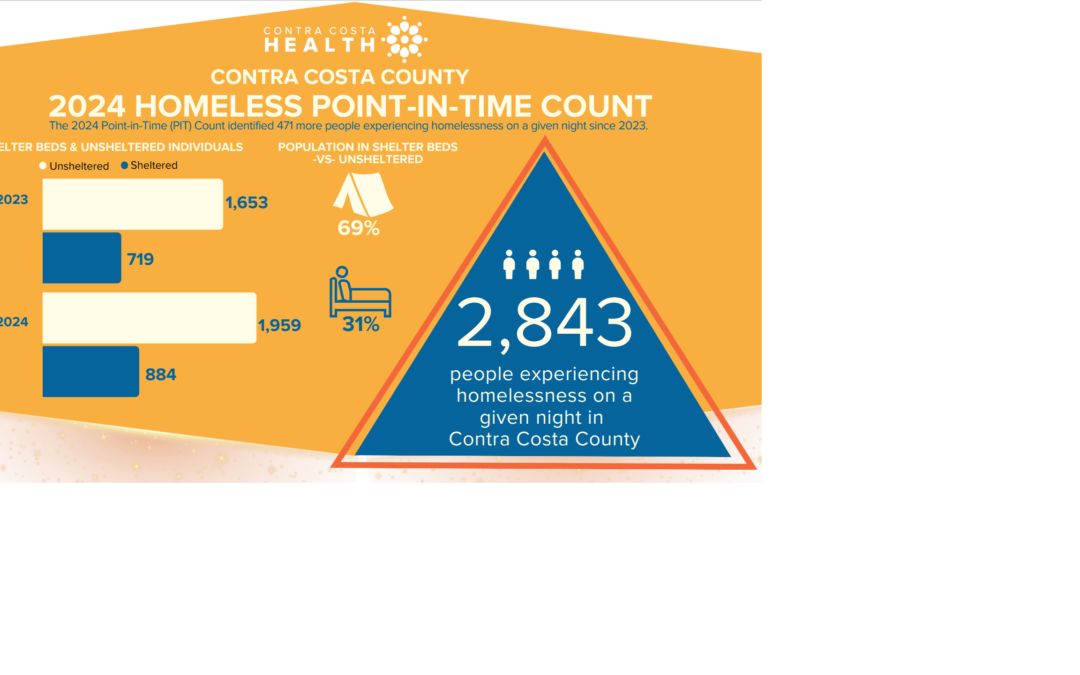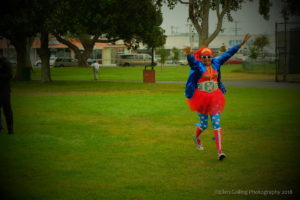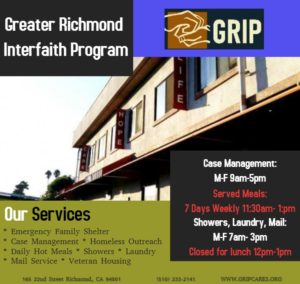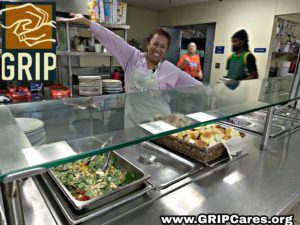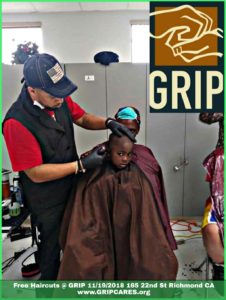The May 2024 “point in time” count of people experiencing homelessness in Contra Costa County revealed positive results for GRIP’s vicinity, but negative results elsewhere around the region, with 2,843 people unhoused, an increase of 19.9% over last year. West Contra Costa, the region served most by GRIP, saw a 24% decline, while homelessness rose in the East Contra Costa County region by 31%. At the same time, shelter beds in the county fortunately increased by 26%.
“The Greater Richmond Interfaith Program (GRIP) continues to be deeply concerned about the growing homelessness crisis in Contra Costa County,” said Executive Director Ralph Payton, adding this is “…highlighting the urgent need for expanded support and resources. Particularly troubling is the 31% increase in East County, reflecting a broader regional challenge that demands immediate and coordinated action. While Richmond has seen a significant decrease in our unhoused population, GRIP remains committed to providing essential services and advocating for sustainable housing solutions to address this escalating issue.”
Payton said it’s difficult to point to the exact reasons for the changes, but obviously good work is happening in Richmond and at GRIP.
Antioch has now become the city with the most homeless people at 413, followed by Richmond with 388. This is the reverse of last year, when Richmond had more. Concord is next with 173, and Martinez with 158. El Sobrante’s homeless population went from 5 to 0 in a year, and Hercules went from 20 to 2. Danville went from 7 to 1 and Clayton from 10 to 0.
The point in time count also revealed more about the nature of the unhoused population in the county.
Nearly a third, or 29%, of the homeless individuals are over the age of 55, and with that aging population comes significant health concerns from living outdoors. 83% of homeless family units report at least one member with a debilitating health condition, with 61% citing a mental health issue, and 59% citing substance abuse. A full 49% had a physical disability of some kind.
Of those without homes, 61% are male, 38% female. The largest ethnicity of homeless people is white at 39%, followed by people stating their ethnicity as Black or African American at 33%. 15% described themselves as Hispanic or Latinex.
As for where people are spending the night, a full 30% are in a van, RV, or car. The other 39% are outdoors or in a tent, and just 31% in a shelter of some kind, be it temporary or emergency.
While a 52% majority of people first experienced homelessness between age 25-49, a full 13% became homeless before the age of 18.
SEE THE INFOGRAPHIC: Contra Costa 2024 Homeless Count
One of the best ways to learn about the problem of homelessness and see how GRIP and community partners are working to help those experiencing it is at the annual Harmony Walk.
The 38th Annual Harmony Walk to end Hunger and Homelessness is on Saturday, October 5th, 2024 at Nicholl Park in Richmond. GRIP is proud to welcome our first major sponsor, Chevron, with a $5,000 major donor sponsor.
“As an expression of our Chevron Way values, Chevron Richmond believes that supporting local communities is our responsibility as a good neighbor. We are committed to making social investments that will expand economic development and improve social well-being through capacity building and community investment,” said Veronica Robles, Chevron project coordinator.
“We focus on funding results-oriented organizations, enabling our contributions to have a greater impact in the community. Last year, we contributed over $1.8 million to organizations dedicated to improving the quality of life in Richmond and West Contra Costa County. We recognize that your organization plays a key role in the Richmond and West Contra Costa communities, and we welcome the continued opportunity to partner with GRIP.”
To sponsor the Harmony Walk, contact GRIP at (510) 233-2141 or [email protected].

